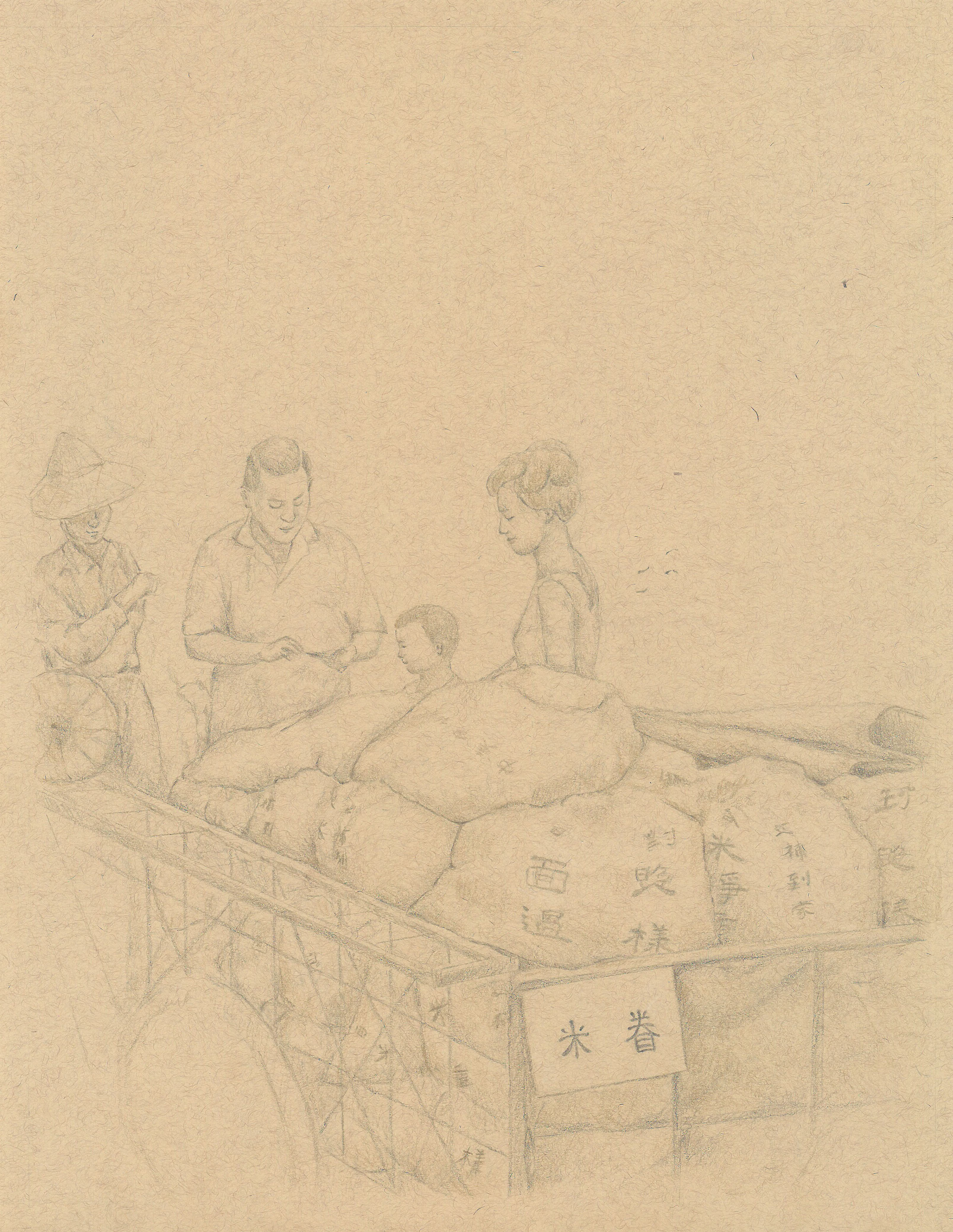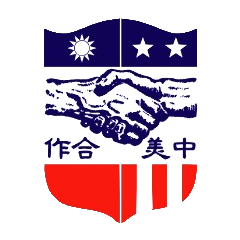

Chin-Jie Melodie Liu, American Money (left)(2020) and U.S.Aid (right)(2020),
colour pencil on Strathmore Toned Tan paper (118 gsm), 27.9 x 35.56 cm each.
Americans really gave us a sense of hope that Taiwan (and the KMT) could change. Although not everyone had a chance to encounter them, we saw them as our connection to the outside world. The biggest betrayal came when the US decided to recognise China. We were so upset; I remember people throwing eggs at them when the last troops left.
The U.S. aid 美援 (meiyuan) provided foreign assistance to Taiwan from 1951 to 1965.1 The U.S. supported Taiwan economically and through its military, as well as with circulation of goods and charitable services. This ranged from establishing health centres to the Food For Peace Program that delivered flour to residents of the
military dependents’ villages
眷村
(juancun) The military dependents’ villages were established by the KMT as residential quarters to house waishengren, made up of mostly military personnel and their families.
. Due to the extreme poverty magnified by the aftermath of the Chinese Civil War, families in the villages turned to any spare materials they could use in order to produce clothing. On the shorts, the iconic U.S. aid emblem

“
Sino
‘Sino’ here refers to Taiwan, formally known as the Republic of China (ROC), as Chiang Kai-shek’s government claimed to represent the whole of China, which it intended to reclaim. Taiwan held the seat of China on the United Nations (UN) Security Council until 1971, when the UN switched their diplomatic recognition to the People’s Republic of China.
–American Cooperation” 中美合作.1 Man-houng Lin, I-min Chang, and Wei-chen Lee, “The US Aid and Taiwan,” (paper presented at the XVIth World Economic History Congress, South Africa, 2012).